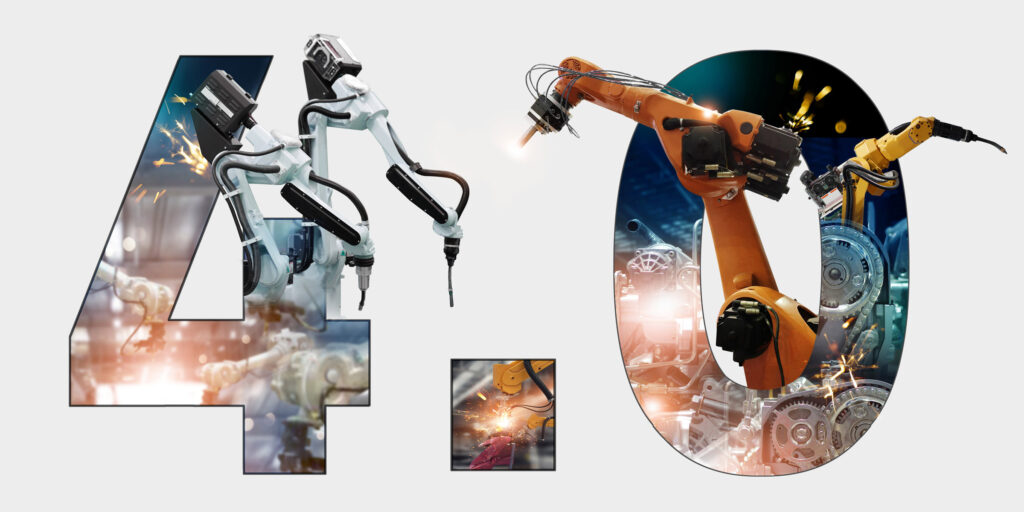The last few years have seen some seismic changes to how we live, work and interact with each other. In response, we are seeing a sidestep in how enterprise tech firms now market themselves to potential customers.
Once upon a time software companies would simply target IT decision makers within organizations. But now it’s increasingly common for those brands to speak directly to the individual consumer. Think about it – how often now do we spot consumer billboard campaigns from enterprise software companies, or their branding emblazoned across sports arenas or players’ shirts?
But what’s driving this change in focus? The answer is a few different things. Firstly, it’s end users, or consumers, that drive product adoption.
“End-user marketing – next to client success – is arguably the most important investment organizations can make in 2023,” says Sarah Danzl, VP of communications and client advocacy at education technology company, Degreed.
“Without your users, you cannot succeed as an enterprise technology platform. The people who use the technology every day will be the ones who ultimately drive results, and marketers are increasingly recognizing this through campaigns that inform and equip users.”
Danzl points out that renewals are unlikely without good results, and that starts at the end-user level. This means targeting individuals is a savvy move for SaaS businesses that heavily rely on retention for growth.
The people who use the technology every day will be the ones who ultimately drive results, Sarah Danzl / Degreed
“There are few that know your product as well as a regular user,” she says. “So listening to individuals is key, as it can uncover areas for improvement in your enterprise technology and also spark new ideas. These people engage the most with your platform every day, so they really are the ultimate stress test for your technology.”
The ‘Spotifyication’ of enterprise tech
Another driver of this shift to more individual-centric messaging is the consumerization of enterprise tech. Users’ expectations have evolved thanks to the intuitive nature of consumer technology in their lives, says Danzl. Netflix, Spotify, and Amazon are all good examples. They have streamlined their user experience so people feel more engaged with them – such as purchasing something with just one click.
“The same expectations are now being seen in the workplace with enterprise technology, both in how a tool works for someone and how a vendor communicates with them. There’s no room for clunky features or dry messaging in the modern-day workplace. People want their enterprise tools to make their lives easier and to inspire them at work, and if they’re not satisfied with this, they’ll soon switch off,” she says.
Mike Marcellin, chief marketing officer at networking vendor Juniper Networks also points to how a new generation of IT buyers are increasingly engaging in consumer-like ways.
Our buyers are consumers in their personal lives, so meeting them where they spend their time is important”
Mike Marcellin / Juniper Network
“Whether it’s short-form Tik-Tok-like videos to learn about solutions, digital buying when they’re ready to purchase, or automated quick-start for new products vs. the old-style user manuals, our buyers are consumers in their personal lives, so meeting them where they spend their time is important,” he says. “And, if the COVID-19 pandemic has done anything positive for business, it has accelerated the acceptance of work-life fluidity. People will get their work done at the time and location that works for them and that gives them the ability to flow into and out of personal activities.”
Marcellin says that work-life fluidity means that “someone may take some meetings from the car where they might see a billboard. They may be doing an email on Sunday while watching a Formula One race on television. They may be spending time at DreamHack because they’re a gamer. They may just want to do business with a company that also works with their favorite retailers, with the sports team they follow, or the university they attended. And increasingly, they want to do business with companies who are committed to the things that are important to them – sustainability, ethical sourcing, equity and inclusion, social justice. These are personal drivers first. It has always been true that businesses don’t buy from vendors, people do. And work-life fluidity has made it even more important because the dividing line from my workday and my personal time has blurred.”
B2B? No, now it’s P2P
There was one overall trend among the companies we spoke to – they were erasing the lines drawn between B2B and B2C and focusing instead on the individual.
Our aim is to engage with our target customers in the places that they are living their lives, Craig Inglis / Sage
“People talk about B2B and B2C, but for Sage it’s all about human to human,” says Craig Inglis, EVP integrated campaigns at the company. “We know that people buy from people. Business owners haven’t set their business up to deal with admin, accountancy or payroll, they have a passion, a dream. So, our focus is on enabling them to realize their dream, taking away friction and barriers to run their companies more efficiently.
“Our marketing reflects that, both in terms of the media choices we are making and the stories we’re telling. In terms of media, our aim is to engage with our target customers in the places (the channels) that they are living their lives and that allows us to connect with them both emotionally and rationally. For instance, we know that sport is huge passion point in our target customer’s lives, and so finding sponsorship opportunities that allow us to engage with them in that environment was a clear choice. Our storytelling focuses on the highs and lows our customers face every day, and the role that Sage can play in making things easier to allow their business to flow.”
Michael Park, chief marketing officer at ServiceNow says a big difference is that people are more purpose-driven than they were a few years ago.
“When COVID-19 came along the world changed. Now we’re living in a hybrid world. It’s not about the job anymore; it’s about engagement of the employees, and customers are becoming even more purpose-driven. A lot of enterprise purchases are driven off of the variables in the requirements of ESG. The world is just a different place now, even geopolitically.
“We took the opportunity to say, ‘The world is different when it comes to enterprise B2B marketing.’ We don’t believe that there’s a B2C, B2B model anymore. We think there is a ‘business to people and purpose’ model. We call it B2P Squared (B2P^2).
“Moving beyond that, everything we do is delivering solutions that [are] helping the world work better, which ties to the purpose of the brand and the products we build and the services we provide. But when we message that out, it’s to the customer’s customer as well. Because if a customer is using ServiceNow [that] implicitly means that it’s helping the customer’s customer help the world work better.”
When it comes to enterprise B2B marketing. We don’t believe that there’s a B2C, B2B model anymore, Michael Park / ServiceNow
In B2C, Park says the goal is to influence the consumer to pull the trigger on a purchase – whatever that may be. In B2B, however, it’s different because of the diversity of the buying group within organizations today.
“The buying group, especially in enterprise software, goes from the board of directors to the CEO to the C suite, to the departmental heads, to the practitioners who use it, to the system administrators who run it, to the developers who code against it. And so, the classic B2B model [has] outlived itself because of the world of digital, and the best way to hit on the value and hit the hearts and minds of that specific group is really helping people understand the value of what the underlying products deliver to employees and the customers.”
Blurred lines
Similarly, Oliver Pilgerstorfer, chief marketing officer at IFS contends that the company looks for partnerships “that tell an authentic story, and one that reflects our values”.
People who decide and buy tech for work live their lives beyond the office walls, Oliver Pilgerstorfer / IFS
An example of this is the recent IFS Cloud Cable Car that traverses the River Thames in central London, UK.
“Yes, we capture great awareness through the visibility of London’s Tube Map, but also many tech and industry events happen in the vicinity and the cable car connects visitors – who are our target audience – with hotels and restaurants. What makes it authentic for IFS is that it was built and is now run by two IFS customers.”
In the US, IFS partners with legendary golfer Jim Furyk, vice-captain of the US Ryder Cup team, and sponsors both college basketball’s Big 12 tournament and the Aston Martin Formula One team.
At the end of the day, people who decide and buy tech for work live [their] lives beyond the office walls or home office screen,” explains Pilgerstorfer. “Building awareness, creating affiliation, and educating in an appropriate way to the format and context of the opportunity can help generate demand and move prospects through the customer journey, which ultimately builds momentum and fuels growth.”
The boundaries between work and life continue to be increasingly blurred, Kim Albrecht / Medius
One great example of this blurring of the lines between business and consumer is Medius, a B2B fintech that’s using podcasting to directly approach the end user of the product in a business: financial professionals. Rather than the usual business podcast format, it has played on the idea of true crime to create stories which are interesting and entertaining to the business audience as well as people beyond the profession and industry.
“Accounts Deceivable is a limited series podcast, looking at a growing category of white-collar crime: invoice fraud. Three real life stories uncover the impact this type of fraud has on people, businesses and communities,” explains Kim Albrecht, chief marketing officer at Medius.
“The true crime podcast format enabled us to create engaging content which is also well-suited to a business audience impacted by fraud. The podcast has helped us reach a new and highly engaged audience of people who could use our product. We were able to target the podcast to accounting professionals through LinkedIn and it’s reached over 2,000 downloads with a 90 percent completion rate.
“In a world of hybrid work, podcasting as a marketing strategy has been highly effective. Recognizing that the boundaries between work and life continue to be increasingly blurred, we’re able to reach end-users with an important message – how to protect businesses from fraud and what happens when they don’t.”
Summing up the change in direction for tech marketers, Park says: “The mindset, the heart and the mind really matters for employees, for customers, and the customer’s customer alike. We’re not thinking about hitting the consumer. We’re thinking, we have to hit the hearts and minds of the people, and we have to be purpose driven.”




